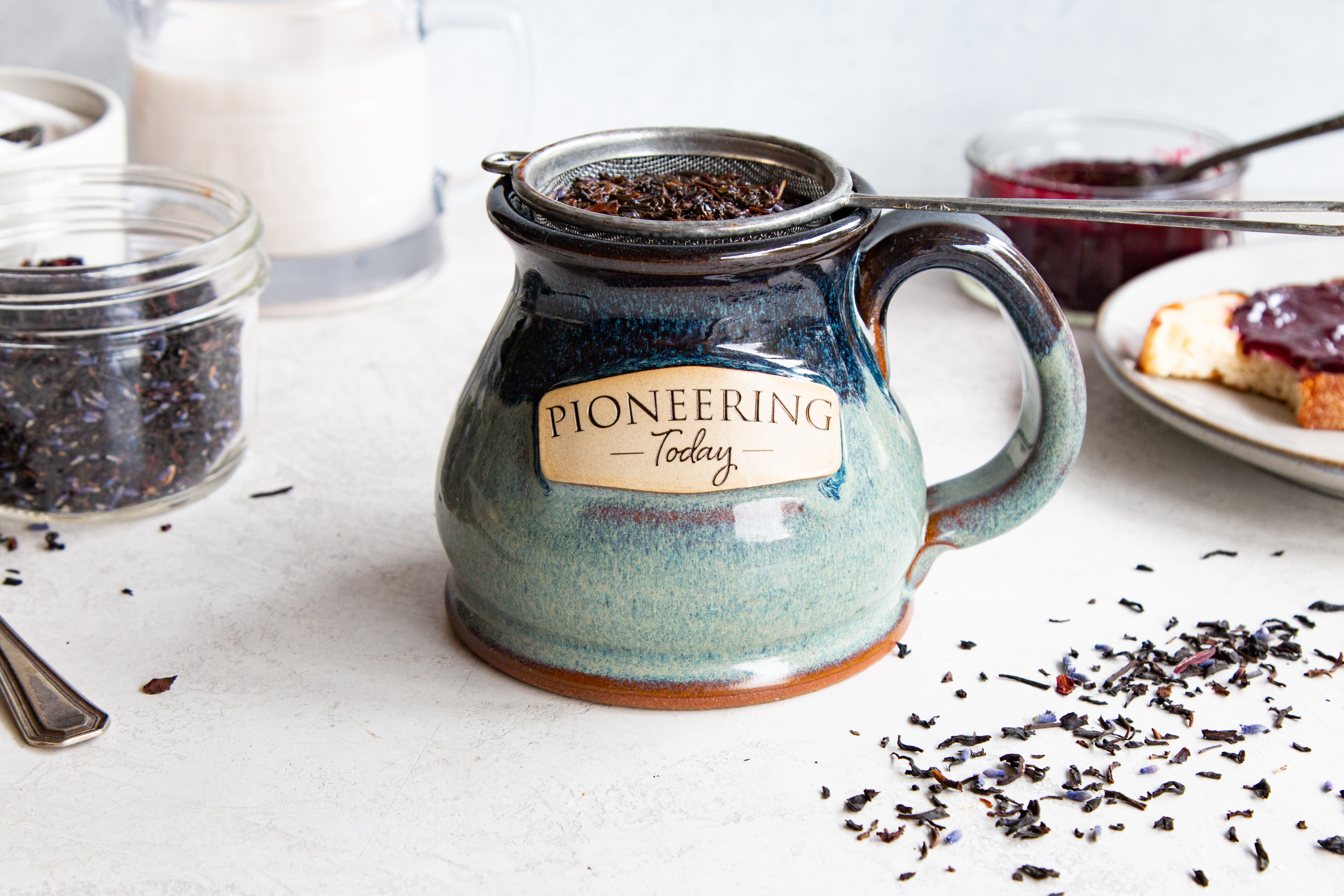Many of us enjoy a good cup of fresh herbal tea just because it tastes so good. But it’s even more satisfying when you use it in a medicinal capacity. Using herbs medicinally requires a few key tips to be successful, both in the herb you choose and how you prepare it.
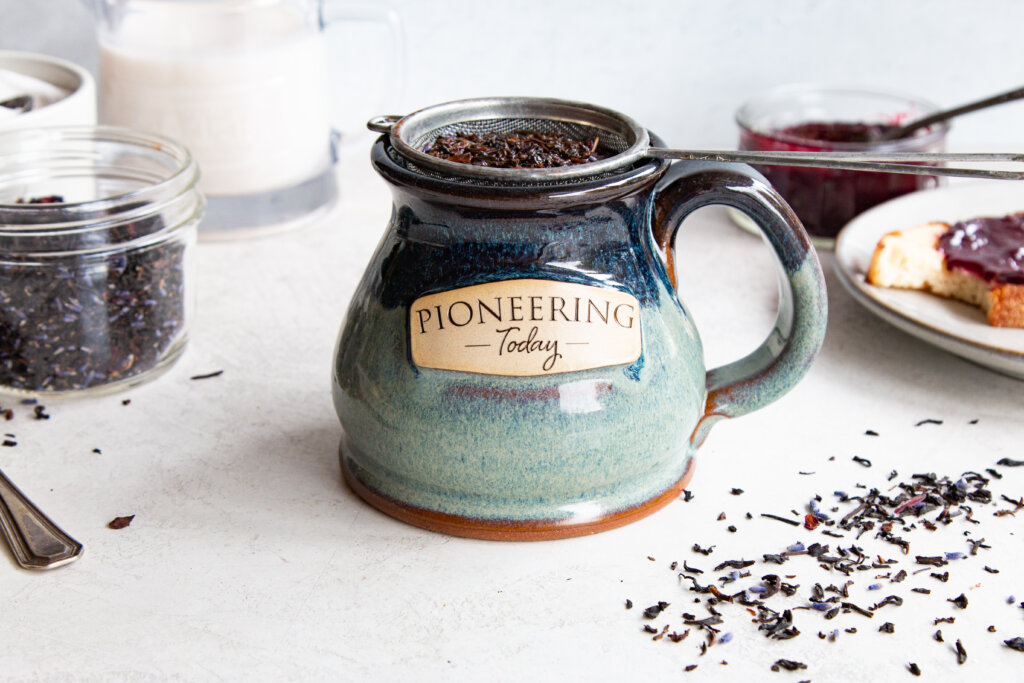
Use this tutorial to learn how to make herbal tea at home using homemade tea blends for better-tasting tea served hot or cold over ice.
Listen below to the full podcast, where CeAnne Kosel from Farmhouse Teas joins me in Episode #236, Herbal Medicinal Tea – How to Make Your Own of the Pioneering Today Podcast, where we don’t just inspire you but give you the clear steps to create the homegrown garden, pantry, kitchen and life you want for your family and homestead.
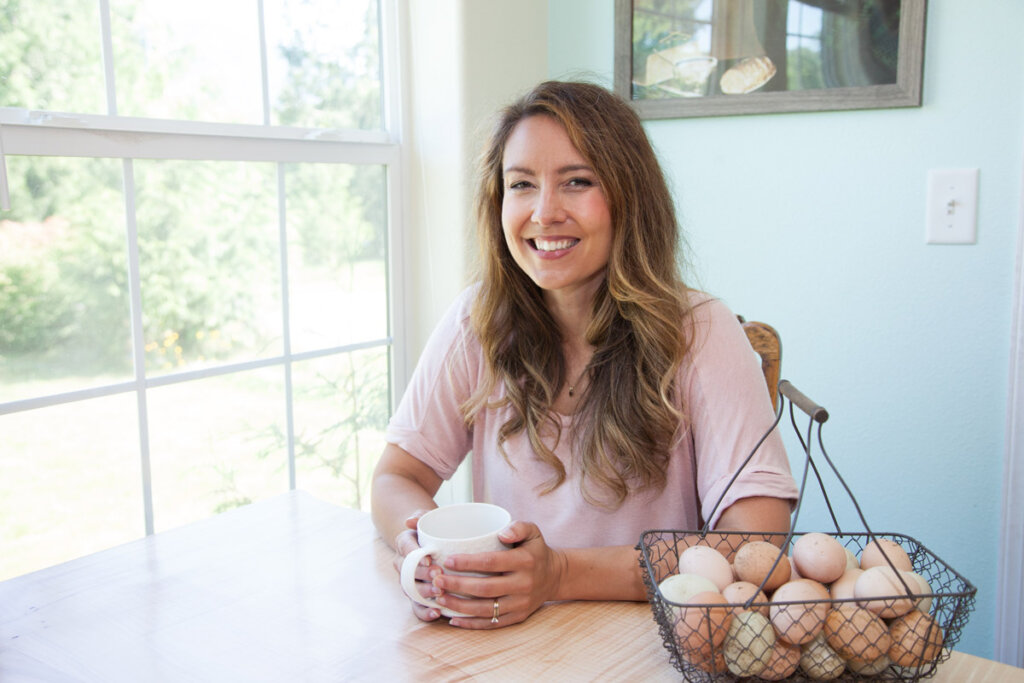
Table of Contents[Hide][Show]
Why I Love Herbal Tea
I enjoy making herbal medicinal teas from scratch, specifically because I can choose the right herbs for my family right from my own backyard. I love looking out at my garden and seeing the array of beautiful herbs that grow, like lavender, thyme, calendula, oregano, and more.
They add beauty to my landscape, and I know I can harvest them for medicine for myself and my family.
Traditionally, knowledge of herbs for medicinal use was passed down from generation to generation as an essential homesteading skill. People just knew how to forage for medicinal weeds. They knew how to use herbs and natural remedies at home and how to make herbal drinks and elixirs.
These traditions of the Pioneers inspired me to learn about cottage garden design, and how to prune herbs & perennials for maximum growth. I began to remove plants around my homestead meant just for landscaping so that I could replace them with a medicinal herb garden.
These beautiful plants have multiple purposes for landscaping, medicinal, and culinary use. One of the most basic ways to use these herbs medicinally is learning how to make herbal tea.
The first herbal teas I began using daily were homemade nettle leaf tea and raspberry leaf tea. These are introductory recipes using just one herb, but now it’s time to go a little deeper and explore more in depth how to make herbal tea.
It’s important to note that I am not a certified medical practitioner. This post is not intended to diagnose or treat but is for informational purposes only. Please contact your healthcare professional before introducing new herbal and natural remedies into your wellness routine.

Benefits of Making Herbal Tea at Home
When you grow herbs, especially from seed, you can control the quality of the herbs in the organic gardening methods you use. You can learn how to harvest herbs and the best methods for drying herbs for stronger medicinal properties.
Besides, growing and harvesting your own herbs can prove cost-effective, which is just one of the many ways gardening can save you money.
Even if you haven’t started growing herbs, buying quality herbs in bulk from trusted suppliers can be a great option. Farmhouse Teas has proven to be a trusted supplier for me, and they are my go-to for herbs that I can’t grow on my homestead.
Plus, using herbal teas can help boost your immune system during the cold and flu season. (Source) Or, build up your herbal medicine cabinet with herbal teas to ease the pain of headaches or soothe tummy aches and sore throats.
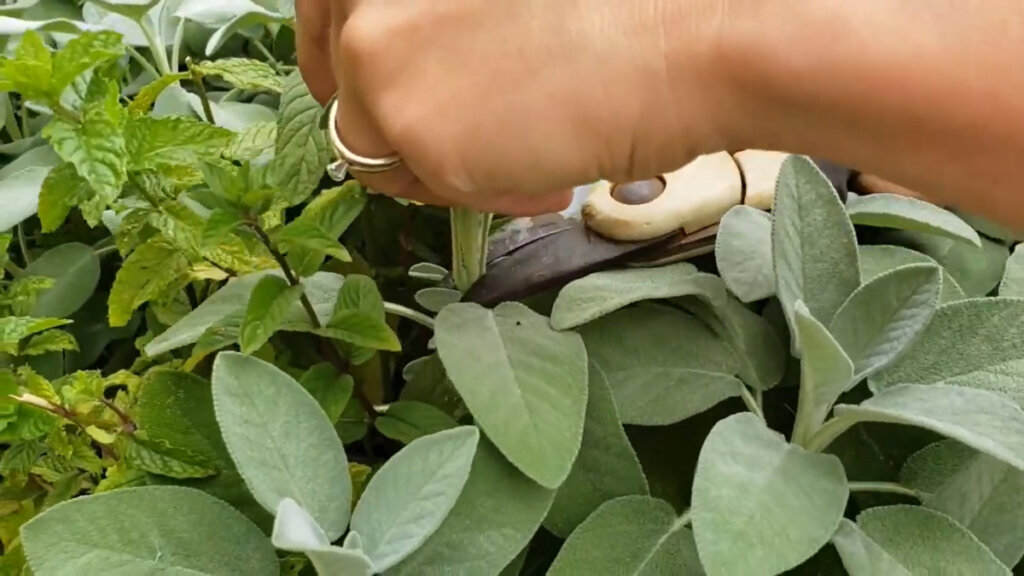
Culinary Herbs vs. Medicinal Herbs
The difference between culinary herbs and medicinal herbs lies in their use. Herbs like sage, rosemary, and thyme that you put on your chicken are the same herbs you would use medicinally.
But if you use these herbs medicinally, pay close attention to the quality, quantity, and purpose.
When you use herbs medicinally, you need a larger quantity of the herb and steep it for a considerable amount of time. Using the correct amount helps to pull out the medicinal quality of the herbs.
And you need a foundational understanding for herbs to work correctly. They don’t work in the same manner as common medicines like Tylenol, so you need to learn how to use herbs in the right way.
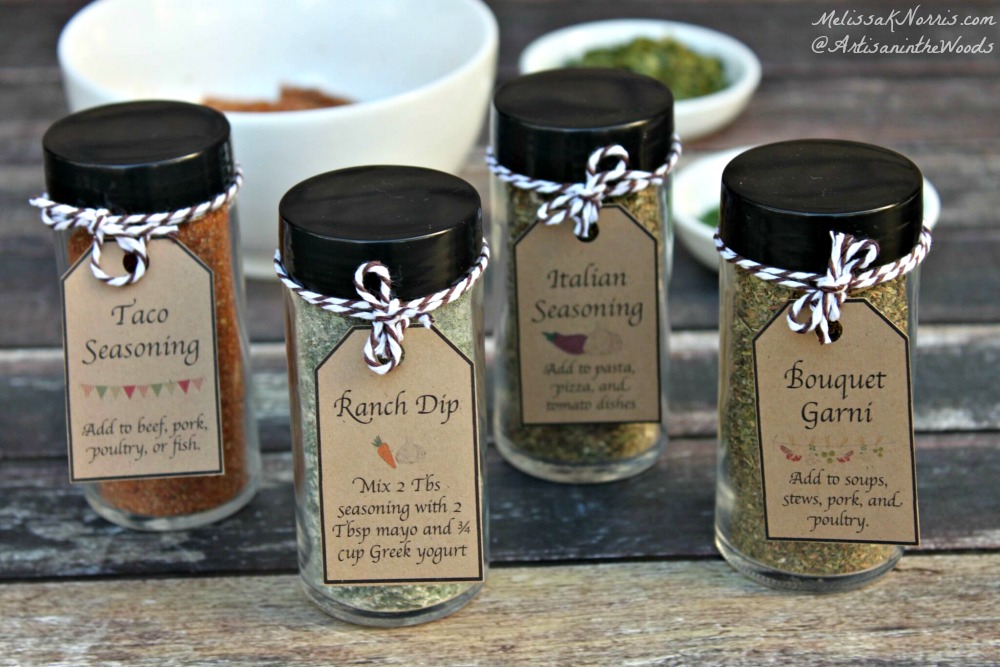
Herbs vs. Spices
We often use the terms “herbs” and “spices” interchangeably.
When we refer to herbs, we mean the leaf or flower herbs that we can grow easily at home. This includes plants that we harvest for the leaves like thyme or oregano, the flowers like calendula or lavender, or the fruit leaves like red raspberry leaf.
When referring to spices, we mean the plants that are difficult to grow at home, like cinnamon or star anise. These spices need a specific climate, like a tropical or desert climate, to grow. Many define spices as the root, stems, seeds, or bark of a plant that is then dried and ground into a powder.
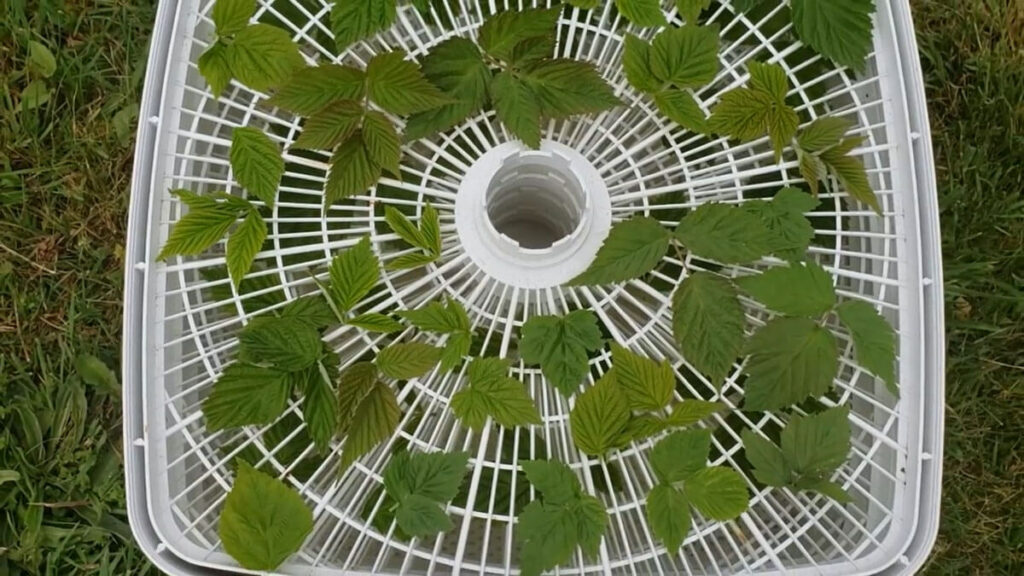
Tips for the Best Herbal Tea
Using herbal tea for medicinal purposes takes time and research to understand the correct ways to grow, harvest, dry, and use herbs for optimal results. Once you build up your knowledge, it will be so rewarding!
Understand How Herbs Work
First, take the time to understand how dried herbs work. One way to get to know all the ins and outs of herbs is to keep herbal monographs or an herbal journal called a meteria medica.
This is a one-page story about a particular herb that tells what the herb does, its medicinal actions, how it affects the body, safety precautions, optimal use, and more.
You can use a monograph template that Ceanne created; it is a worksheet to create your own materia medica. As you research a particular herb, keep a record of your findings to build up your own book of herbs and herbal tea recipes.
Once you truly understand the correct use of an herb and begin to use it medicinally in the right way, you get a powerful medicine from this one herb.
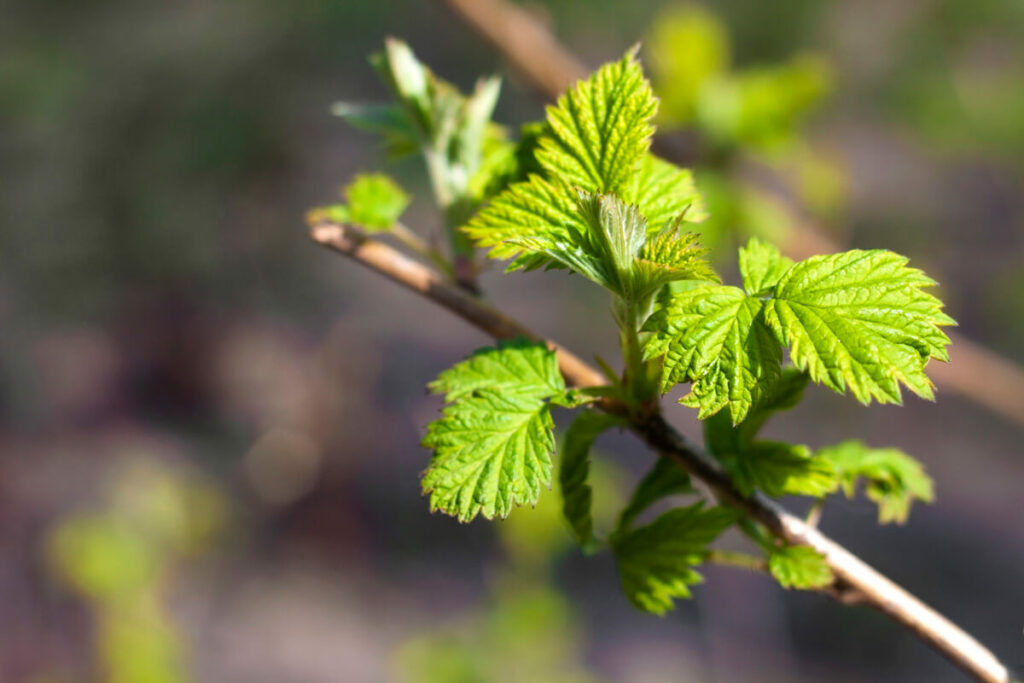
Quality and Freshness
Make sure you use herbs from a reputable source or that you grew, harvested, and dried yourself.
The quality of herbs makes a difference in efficacy. When the herb is harvested in its prime, there are more nutrients to pack a powerful punch. The herbs you grow in your yard will be much more potent than herbs you buy from a supplier.
Pro-Tip: When you purchase herbs, ask how long they have sat in storage, if they were exposed to light, and how they were dried.
Correct drying makes a difference. Higher temperatures in the drying process can deplete the nutrients in the herb. But, if it is under-dried, it becomes musty and moldy. When you dry herbs yourself, take care to do it properly.
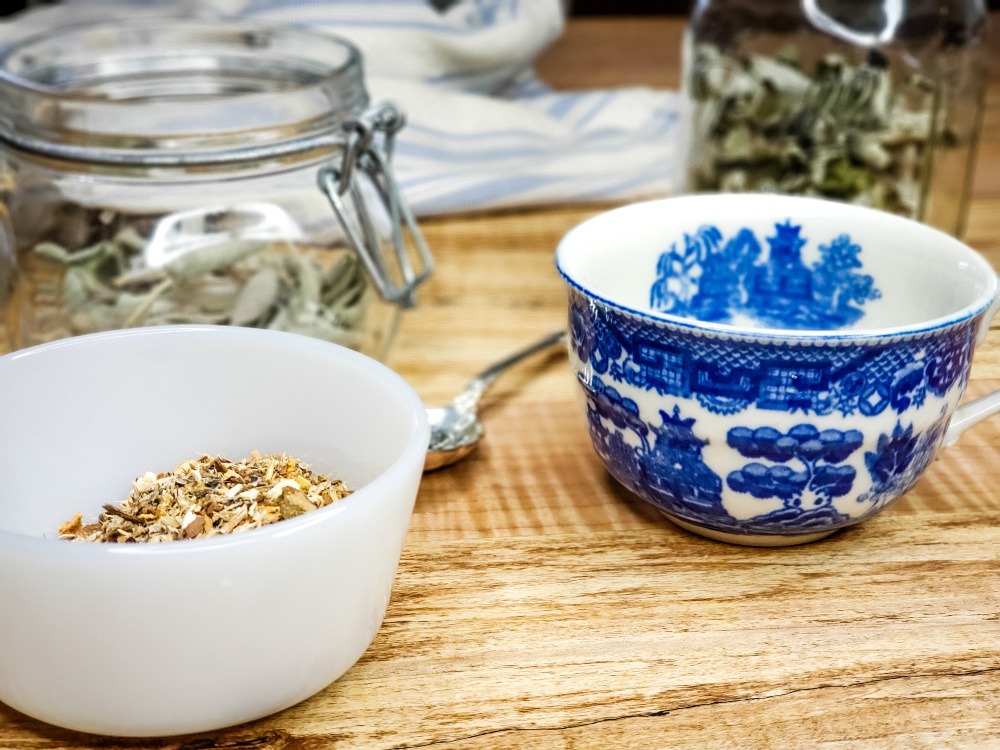
Herbal Decoctions and Herbal Infusions
You can make either an herbal infusion or a decoction when making medicinal tea. A decoction is used more for roots like dandelion root or astragalus root. When you make a decoction, you use more herbs and boil them in a pot, kind of like a sauce reduction.
Herbal infusions use three to four times more herbal material than a normal tea bag, which changes depending on which herb you are steeping. You also infuse it for a longer period of time.
Typically, herbal teas steep for five to seven minutes, but medicinal herbal infusions steep for 20 minutes or longer, depending on the herb and ailment. The steep time depends on your herbal blend and the type and strength of medical actions they have.
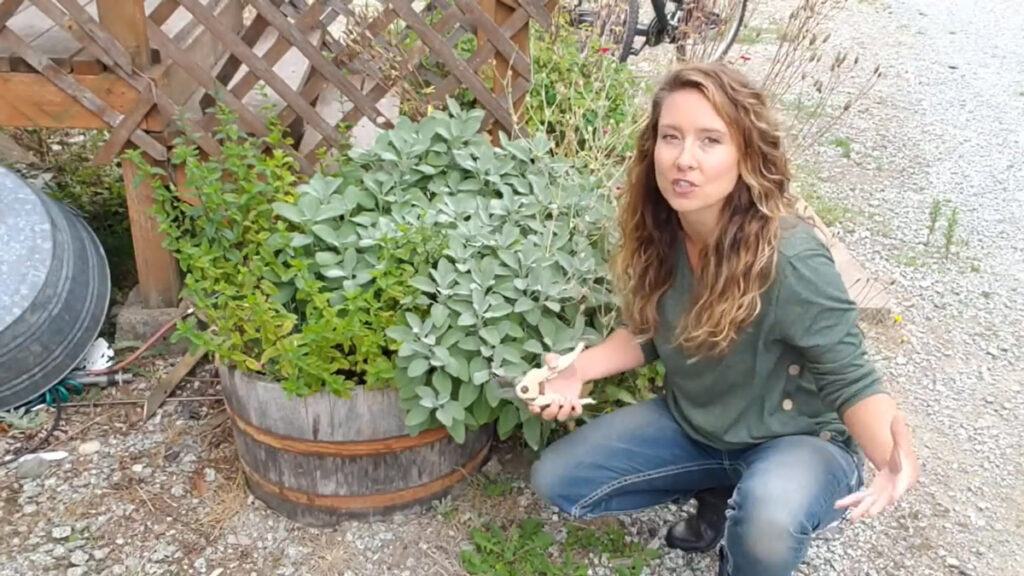
Using the Right Herbs for the Right Application
Make sure you use each herb or herbal blend for the right reasons. In other words, pick the right herb for the right ailment. You will only see results if you use herbs correctly and for the right ailments, and if you use herbs in the right way, you end up with a powerful medicine.
For example, I find sage helps soothe my throat, but in high doses, sage may not be a suitable throat soother for an asthmatic. (Source) Or, if a man drinks a tea designed to work with a nursing mother to increase milk supply, he won’t start lactating just because he drinks it.
On a more serious note, if herbs are not used correctly, they can cause health concerns. Just because something is natural doesn’t automatically mean it’s safe. That is why I stress that people do their own research and cross-reference their sources.
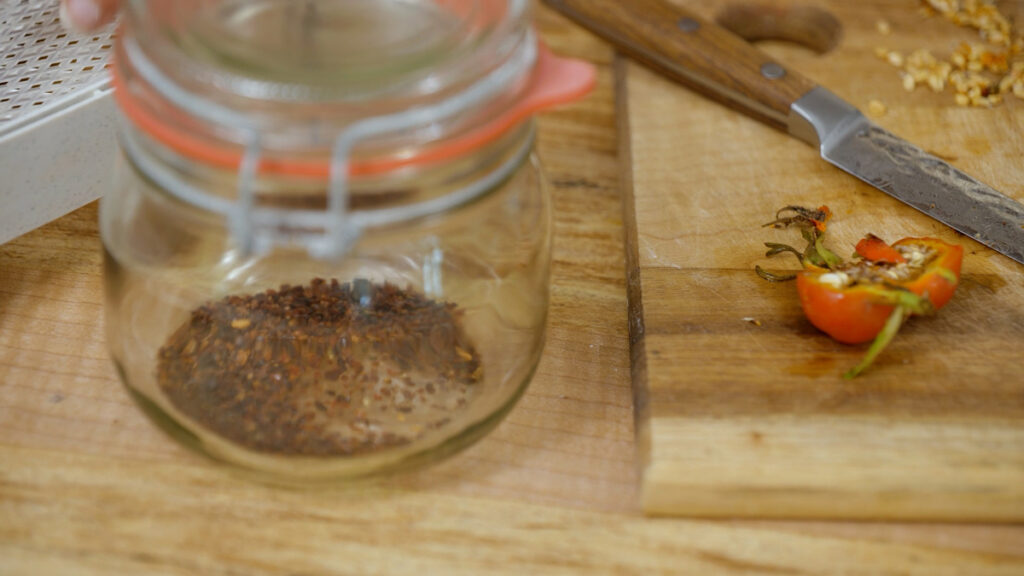
Using Single Herbs or Herb Blends
As you begin using herbal medicine, one point of confusion may arise regarding whether or not to use single herbs or herb blends. I like making fresh mint tea or sage tea during cold and flu season, but you need to decide, especially with the medicinal aspect in mind, not just flavor or comfort.
I like my tea to taste good, but how do you decide between using a singular herb or blending and combining multiple herbs in a tea?
CeAnne uses the tea triangle to make herbal tea blends. And as you can guess, three components make up this tea triangle.
- Primary Herbs – Pick your primary herbs first. The primary herbs make up the bulk of the tea, maybe 65% to 75% of the tea blend. This would be the herb that addresses the primary ailment. You may use sage as your primary herb if you want to work on a sore throat. (Source)
- Nourishing and Supporting Herbs – These herbs make up about 20% to 30% of the blend. The supporting and nourishing portion would include other herbs that address any other ailments of the primary ailment, like peppermint or rose hips, that contain specific nutrition for helping a cold or flu because usually, the sore throat comes with those other cold or flu symptoms. (Source)(Source)
- Catalyst Herbs – These herbs make up 3% to 5% of the tip of the triangle. The catalyst herbs move the other two herbs and put them into action. And those are usually kind of spicy herbs like cayenne or dried ginger. They get the blood flowing, and they get things moving along. (Source)
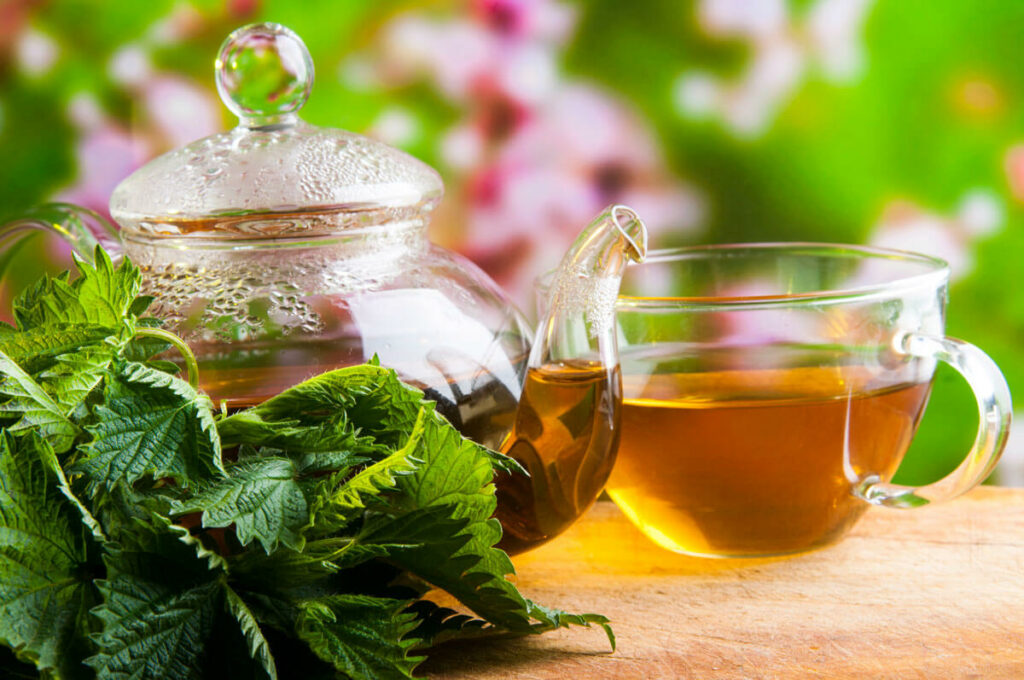
Supplies Needed
- Tea Kettle – Boil water on the stove in a teapot or pan. Or, use an electric teapot.
- Tea Ball or Tea Stick – Tea balls or tea sticks are stainless steel baskets that open to hold loose-leaf tea. Pro-Tip: If you want to take your herbal tea blend on the go, purchase unbleached tea bags. You can fill them up with your herbal tea blends and tuck them in your purse or bag as you leave the house.
- Mug – I love using a pottery mug that fits well in my hand.

Ingredients Needed
- Herbal Tea – Choose an herbal blend that meets your needs. (See the blend combinations below.)
- Water – 208°F offers a perfect steeping temperature for herbal teas.
- Fresh Lemon or Cinnamon Sticks (optional) – You can use these as a garnish or for added flavor.
- Raw Honey (optional) – Fresh, raw honey sweetens tea and adds to the medicinal benefit. (Source)
Relaxing Blend
- 2 parts dried chamomile flowers (Source)
- 1 part dried lavender (Source)
- 1 part dried lemon balm (Source)
Allergy Relief Blend
- 2 parts dried nettle leaves (Source)
- 1 part dried peppermint leaves (Source)
Tummy Ease Blend
- 2 parts dried peppermint leaves (Source)
- 1 part dried fennel seeds (Source)
- 1 part dried chamomile flowers (Source)
Fertility Blend
- 2 parts dried red raspberry leaves (Source)
- 1 part dried nettle leaves
- 1 part dried mint leaves
Morning Energy Blend
Flower Power Immunity Blend
- 1 part dried echinacea flower petals (Source)
- 1 part dried elderflowers or dried elderberries (Source)
- 1 part dried rosehips (Source)
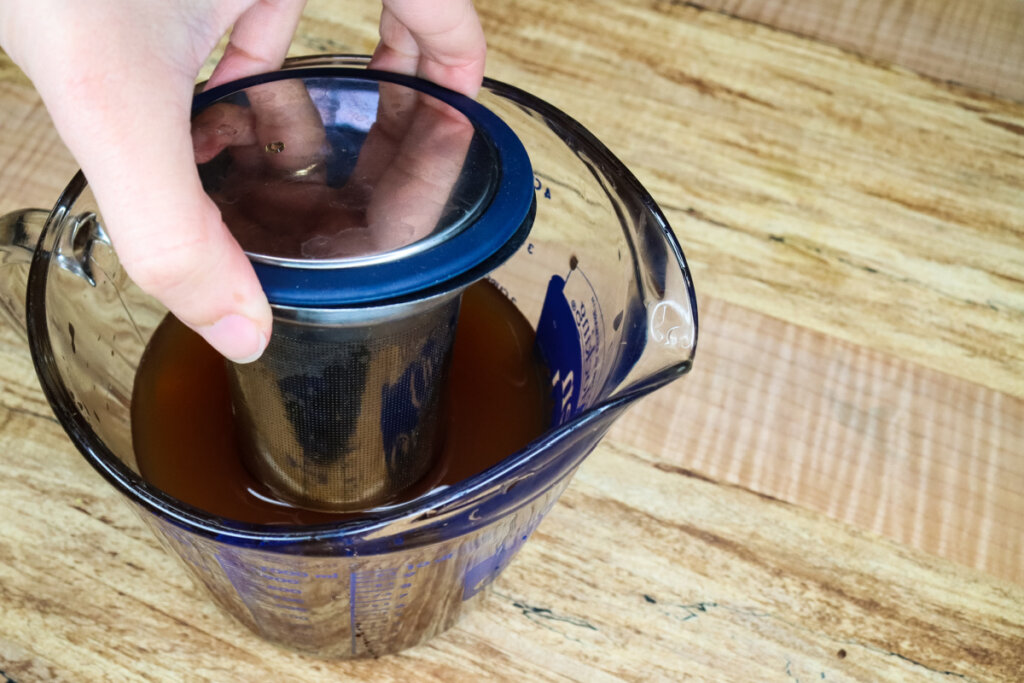
How to Make Herbal Tea
- Put water in your tea kettle and place it on high heat to bring the water to a boil.
- Choose your herbal tea blend and add one teaspoon of tea to your tea ball (or tea stick) per 8-ounce cup while you wait for the boiling water. Pro-Tip: If serving your tea iced, use half the amount of water to brew so the addition of ice does not water down your tea.
- After the water boils, allow it to sit in the kettle briefly to cool to approximately 208°F before pouring it into the cup.
- Add your tea ball or tea stick.
- During the steeping process, cover your cup or teapot to trap the medicinal properties from escaping through the steam.
- Once your tea steeps for at least 5 minutes (although some herbs take longer to steep to gain more medicinal health benefits), you can add garnishes to your cup, like sliced lemon or a cinnamon stick.
- Serve hot, or if serving cold, place ice in a glass jar and pour cooled tea over the ice for refreshing iced tea.
- Enjoy your cup of tea!
Pro-Tip: Making tea for a crowd? Use a tea press or a French press. Just adjust the amount of tea per the amount of hot water. Generally, use one teaspoon of loose-leaf tea for every 8 ounces of water.
Did you make one of these herbal tea blends? If so, please leave a star rating in the recipe card below. Then snap a photo of your herbal tea and tag me on social media @melissaknorris so I can see!

Practical Home Herbalism
Learning how to make herbal tea is a great place to begin using herbal remedies at home. If you are ready to learn more about herbalism, get my Practical Home Herbalism course. I’ll teach you how to listen to your body, learn what remedies work best for you, and even how to make them so you can build up your own herbal medicine cabinet that you can feel confident using for yourself and your family.
Resources:
- Where to Find CeAnne
- Worksheet to create your own materia medica
- Free D.I.Y. Tea Blending Workshop
- Verse of the Week: Ezekiel 47:12
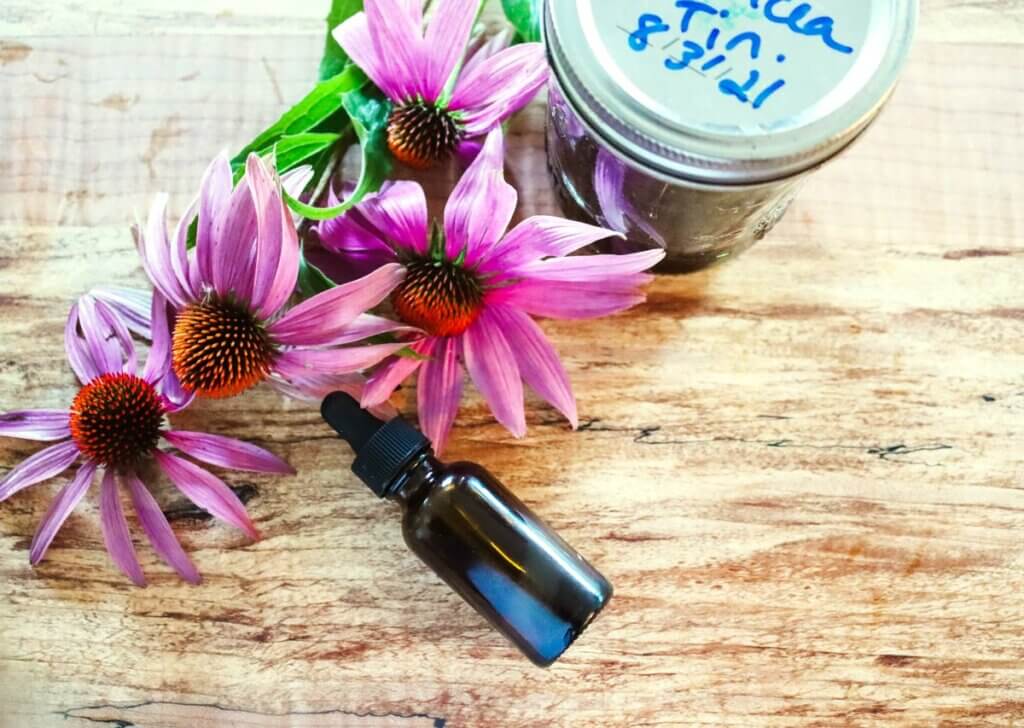
More articles about medicinal herbs…
- How to Plan a Medicinal Herb Garden
- 5 Tips to Harvest Herbal Flowers for Medicinal Purposes
- 8 Medicinal Herbs and Their Uses for Growing an Herbal Tea Garden
- Herbal Home Remedies for Cold and Flu
- Echinacea Tincture – How To Make It & Use It
- Homemade Traditional Fire Cider Recipe & Benefits
- Benefits of Rosehips (Growing, Harvesting & Medicinal Uses)
- Using Herbs in Every Season
- The Link Between Honeybees & Plant Medicine
